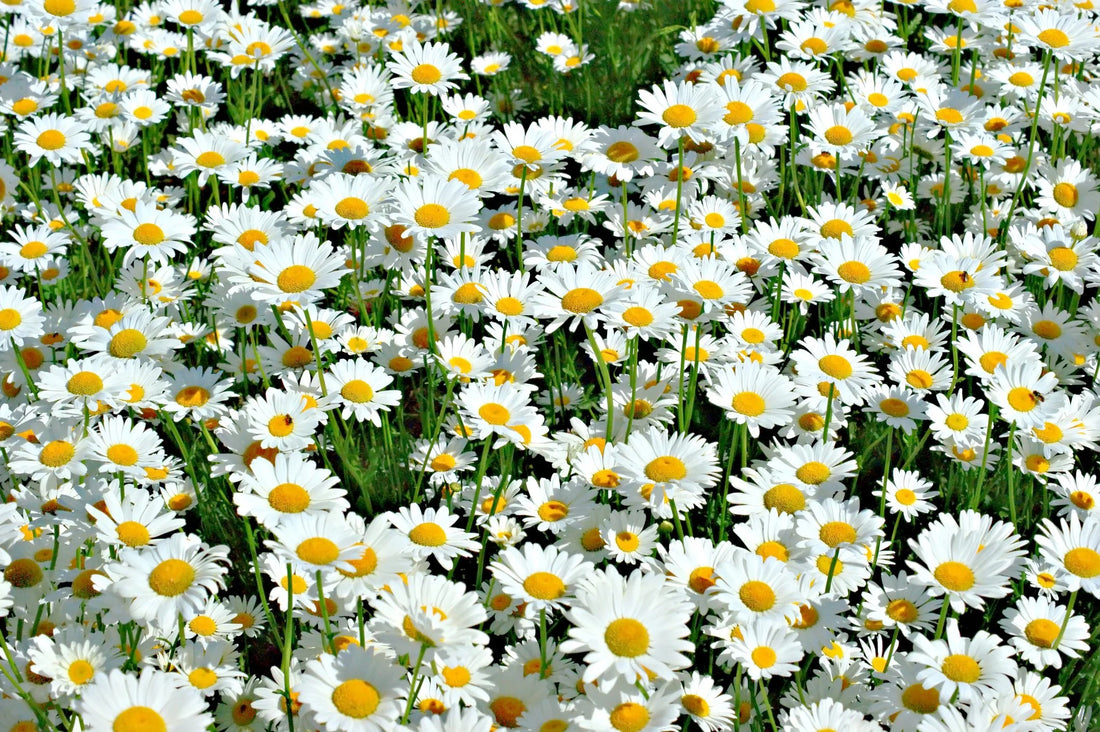
September: The Daisy
Buckle up to learn about daisy lore, snack recipes, and fun facts!

The daisy was recently voted as the national flower of the Netherlands. Botanist Rogier van Vught describes it as a very “dutch choice”, noting that “It says something about the type of natural environment we have here. Ours are the small things you have to seek out and then grow to love” (excerpt from radio program Vroege Vogels).
Bellis Perennis
The common daisy, or Bellis perennis, is a member of the aster family. Between cross pollinating and modern plant science, ther
e are now over 20,000 varieties of daisies. As one of the most well-known flowers, they flourish nearly everywhere in the world except for Antarctica. Some of my favorites to look up: The Blue-Eyed African Daisy, the Karoo Marigold Daisy, and the Cape Dai
He Loves Me, He Loves Me Not
Daisies are intimately tied to childhood. They make me think back to daisy crowns, playing “he loves me he loves me not” on the school playground, or blowing dandelions in the heat of summer.
The “he loves me he loves me not” rhyme is believed to have originated in Victorian times. In this childhood game, you’d rhythmically pick a petal and alternate from “he loves me” to “he loves me not” until the last petal gives you a final answer. Ironically each “petal” is actually a whole flower head as daisies are composite flowers. This means they’re made up of lots of teeny flowers!

Since daisies pop up all around the world, different regions all came up with their own lore and histories. The Romans believed that the daisy originated from the nymph Belides who transformed herself into the flower to escape from Vertumnus, the god of seasons and gardens. The story holds feelings of innocence, purity, and transformation which have stuck with the flower to this day.
Norse Mythology connects the daisy to the goddess of love, beauty, and fertility: Freya. This made it a symbol of motherhood, cycles, and new beginnings. Similarly, Celtic lore believed that daisies were sprinkled by God to comfort parents who had lost children.
In England, King Henry VIII ate daisies to relieve his stomach-ulcer pain. During his reign, it was also believed that drinking steeped in wine would cure insanity in 15 days.
No matter where you look, there will be a story and a history about daisies. The lore boils down to a couple of takeaways: daisies are a symbol of purity, innocence, childhood, and cycles. More than that, they have been used as herbal medicines for centuries.
Medicinal + Snackable Properties
 Daisies are edible! The flowers, leaves, and buds can be eaten raw, canned, or cooked (though they’re said to be quite bitter). Daisies are an anti-inflammatory herb and improve circulation. Daisy tea was made in the war in Bosnia and Herzegovina (1992-95) which led to the discovery that they contain 34mg of vitamin C per 100 g. Pretty neat!
Daisies are edible! The flowers, leaves, and buds can be eaten raw, canned, or cooked (though they’re said to be quite bitter). Daisies are an anti-inflammatory herb and improve circulation. Daisy tea was made in the war in Bosnia and Herzegovina (1992-95) which led to the discovery that they contain 34mg of vitamin C per 100 g. Pretty neat!
In the 15th century the plant was noted as a fever reducer and diuretic by Robert Dodonaeus. By the 17th century, people had hopped on the trend, and William Turner (1509-1568) wrote about daisies helping with bone thickening. Irish folk medicine used the plant for even more ailments including tuberculosis, coughs, colds, headaches, skin problems, ringworm, and a bunch of diseases I cannot spell nor pronounce. If you’d like to learn more, Eatweeds Podcast has a great list of references and a great wealth of information on more edible plants (first on the source list).
Fun Facts!
-
The word “Daisy” comes from Old English dæges ēage ‘day's eye’ because the flower opens in the morning and closes at night
-
Shasta daisies were bred from four different daisies, creating the classic favorite
-
Daisies are April’s birth flower and the flower of fifth wedding anniversaries.
-
On April 18, 2009, 331 people gathered on an Italian TV show to play the world’s largest game of “He Loves Me, He Loves Me Not” with daisies
Thank you for joining this month to learn about daisies!
Curious to learn more? Checkout these sources!
https://www.eatweeds.co.uk/daisy-bellis-perennis/
https://www.wildlifetrusts.org/wildlife-explorer/wildflowers/common-daisy#:~:text=However%2C%20each%20'petal'%20is,of%20lots%20of%20tiny%20flowers .
https://www.epicgardening.com/daisy-varieties/#:~:text=These%20low%20maintenance%20flowers%20come,for%20just%20about%20every%20gardener .
https://www.bloomsybox.com/blog/posts/the-enchanting-world-of-daisies
https://plantspecialists.com/blog/daisy-folklore/
